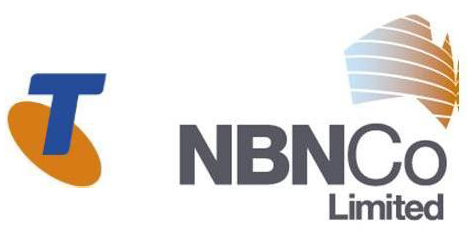A week ago Telstra (TLS) released a brief overview of the agreement reached between itself and NBN Co over the future of its network. So a former government-owned telecommunications monopoly (turned private-sector infrastructure monolith) reached a deal on how the new, government-owned telecommunications monopoly would trash its copper network and access it’s formerly government-owned ducts and cable trenches.
Australia certainly doesn’t do stupid by halves.
It may be a week late (punctuality is so FY11), but I’ve thrown together a brief overview of the agreement and analysed the scant numbers it provided.
The “Agreement”
For those with the time they can read the full 30-something pages here. For those with a life, I have summarised it below by the major agreement sections.
The Subscriber Agreement: As the NBN rolls out, TLS must disconnect their copper-based network and stop broadband services on their hybrid fibre coaxial network (they can continue providing Pay TV services). TLS must never again use their disconnected networks to provide services except in very limited circumstances (like when NBN Co can’t reach a premise). From 20 years from the commencement date, TLS must exclusively use the NBN as the fixed line connection to provide services to a premise.
Infrastructure Services Agreement: TLS will provide NBN Co access to its “dark fibre” links (unused fibre optic cable). TLS must ensure all dark fibre links to be used by NBN Co are up to scratch and will provide ongoing maintenance. TLS will also allow NBN Co to access its exchange buildings and duct infrastructure (man holes, cable pits etc). NBN Co will access TLS’ lead-in-conduits (i.e. the section leading into your house) and upon connection to the house the NBN will take ownership of the conduit.
Access Deed:When the NBN is up and running, NBN Co will not charge TLS any more than $24 per month (plus taxes) for wholesale access to the network. NBN Co has guaranteed provision of 12 Mbps download and 1Mbps upload at peak rates. This cost guarantee will last for 5 years from the commencement date of the agreement.
TUSMA Agreement: The Telecommunications Universal Service Management Agency agreement basically ensures TLS will continue to fulfil its current service obligations regarding emergency service calls, payphone access for regional areas etc. The agreement mentions tinkering with the method of service delivery, but it has a very low business impact compared to the agreements above.
The wireless clause: within the Subscriber Agreement, TLS promises not to “promote” wireless services as a substitute for fibre-based services for 20 years from the commencement date, but otherwise remains free to compete in the market for wireless services. If anyone can see how this would be practically enforceable, shout it out. Otherwise I’m calling this a nothing agreement.
The Numbers
To disconnect Telstra’s current network and services, as well as gain access to its infrastructure, the NBN Co is going to throw fat wads of cash in Telstra’s general direction. However, the only numbers given in the statement were single NPV figures (along with associated discount rates and time frames) for each of the agreements. No estimated annual payments, no justification based on existing network asset values, no forecasted revenue impacts as the copper network is decommissioned. Nada.
Which makes summarising it easy:
The Subscriber Agreement: payments to TLS for disconnecting its networks and stopping services
- $4.0 billion NPV (post-tax), 10% discount rate, 10 year timeframe
Infrastructure Services Agreement: payments to TLS for access to dark fibre, exchanges and conduits
- $5.0 billion NPV (post-tax), 10% discount rate, 30 year time frame
Tusma Agreement: payments to TLS to ensure universal service obligations are met
- $0.7 billion NPV (post-tax), 8% discount rate, 20 year timeframe
Other government sweeteners: payments to TLS for training and information campaign costs
- $1.0 billion NPV (post-tax), 10% discount rate, 10 year timeframe
Despite the scant info, we can back-calculate the cashflows from the stated NPV figures. Assuming that there is no initial cost to TLS (cashflow = $0 at year zero), using the stated discount rates and time frames and assuming payments increase each year by 3% (CPI estimate), I calculate that the total cash payments received by TLS are in the order of $46 billion over 30 years. Sounds like a lot more than the “$11 billion” NPV figure stated in the media release, doesn’t it?
Don’t forget the Tax!
The NPV analysis above is based on the post-tax cashflows received by TLS – which means the pre-tax payments by NBN Co would be even higher. Assuming TLS pays an effective tax rate of 27% (allowing for some capital depreciation) on the payments received, the actual payments made by NBN Co over 30 years come to $62 billion.
Alan Kohler has already taken a shot at this analysis in Bus Spectatorand he gets post-tax numbers pretty close to mine, so there’s a good chance I’ve got my sums right. Kohler also questions the use of a 10% discount rate, claiming 7% is more appropriate. I won’t quibble on the discount rate used – the numbers are big enough for me already. However, it’s still worth remembering that if the discount rate lowers, then the cashflow numbers above get a lot bigger.
Well, TLS is obviously going to be the beneficiary of a very large and long-term cashflow. This is essentially a reverse mortgage on the infrastructure it has built over the decades. However, they’ll also lose revenue as the NBN replaces its current network – a network which generates profits because TLS charges competitors to use it. At the end of the NBN rollout, TLS will have changed from a telecom infrastructure owner and service provider to just a service provider, much like its competitors.
The agreement doesn’t provide enough financial information to judge whether TLS has got a good deal for its network. It’ll get a massive amount of money to be sure, but it’s a massive monopolistic network that’s being discarded. It might be have been worth even more if it continues operating.
A true evaluation won’t be possible until some detailed costings are released along with the NBN Co rollout schedule – which will probably be never given the combination of commercial and political sensitivity surrounding the NBN project.
There is one thing current TLS shareholders should note though: once the NBN rollout starts, their beloved dividend-providing, monopolistic infrastructure stock will slowly morph into a telco service stock that can’t milk its competitors for rent. It will have a guaranteed 30 year cashflow from the guv’mnt, but what it chooses to do with it is anyones guess. Either way, their financial fundamentals will undergo a big change.
And given Telstra’s unique ability to piss off every retail customer who has ever called their service centre, being a service-only company will require some seismic cultural changes too.
Disclosure: The author is a Director of a private investment company (Empire Investing Pty Ltd), which has no current interest in the businesses mentioned in this article. The article is not to be taken as investment advice and the views expressed are opinions only. Readers should seek advice from someone who claims to be qualified before considering allocating capital in any investment.

